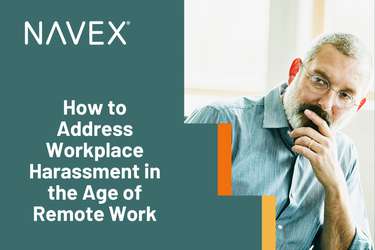The rapid demise of the Weinstein Co., once one of the most successful movie studios in Hollywood, as well as the recent news about Matt Lauer and Garrison Keillor should have every CEO wondering: What skeletons does my organization have in the closet? And how could they destroy the value of my company’s brands, or the company itself?
The sexual harassment allegations leveled against Harvey Weinstein by numerous women over decades of his career are especially egregious, even if Weinstein denies them. They are also especially dangerous to a company whose “product” is inextricably tied to public perception.
Victims of harassment in the workplace now can tell their stories in any number of places other than (or in addition to) a lawsuit: Twitter, LinkedIn, Facebook and Tumblr, to name a few.
But it would be a mistake to assume sexual harassment is only a problem for high-profile media and entertainment companies. The internet has fueled a shift in power across the entire workplace. Victims of harassment in the workplace now can tell their stories in any number of places other than (or in addition to) a lawsuit: Twitter, LinkedIn, Facebook and Tumblr, to name a few. How would your customers react to similar claims against your organization?
A reassessment of risk is in order. For many years, companies have been able to assess with actuarial precision the financial risks of product defects. That basic calculation – potential cost of a bad outcome times the risk of an occurrence – is built into the thinking of managers and directors and drives the decision-making process at most companies.
That calculation won’t work with harassment, though. By the time your lawyers are in settlement negotiations with the next harassment victim, a chain of bad decisions has allowed a dysfunctional culture to persist, and potentially to pollute every product you sell to the public.
What you need is a culture where everybody knows what the rules are and what the consequences are for breaking them. How can you get there?
- First of all, you have to fund the company culture. Without adequate resources, your ethics and compliance operation can’t establish the systems necessary to build a compliance ecosystem where issues are dealt with when they’re small, instead of catastrophic.
- Give authority to the right people. If your compliance and human resources departments can’t remove a toxic manager because business interests outweigh concerns about workplace culture, you have a problem. The skeletons are probably building up in your closet and you don’t even know it.
- Listen. To build a speak-up culture, you need to listen. You want to hear what’s sick and toxic in your organization, painful as it may be. That may mean checking reports on Glassdoor, or even asking questions first. Your employees must feel safe to speak up without threat of retaliation and with confidence they’ll be believed.
- It’s not all about the money. Harassment claims can be expensive and of course the latest rash of incidents demonstrates the dire balance-sheet risk they present to some companies. But to properly reassess the risks managers must assign a greater value to human dignity and civil treatment in the equation. This isn’t the kind of risk you can model on a spreadsheet.
White Paper: 2017 Workplace Harassment Trends and What Employers Should Know
Sexual harassment wasn’t invented this year, and it isn’t going away.
Sexual harassment wasn’t invented this year, and it isn’t going away. It’s a psychological problem, usually rooted in workplace power imbalances, and predators aren’t going to change their activity voluntarily.
What is changing is how companies and investors are assessing the risks associated with harassment.
A recent cover story in Barron’s quoted investment managers who are increasingly concerned about the enterprise-value impact of sexual harassment and other symptoms of a corporate culture gone awry. The Equal Opportunity Employment Commission believes one in four women in the U.S. experience harassment at work, yet a study of Securities and Exchange Commission filings that Barron’s requested from Sentieo found only 166 mentions of “gender” in the risk factors section of annual 10-k filings since 2009.
“Corporate boards must be much more aggressive in enacting stronger compliance regimes for human resources,” Stu Dalheim, director of engagement at Calvert Research and Management, the responsible investing unit of Eaton Vance, told Barron’s.
In a world where a single tweet can force change across the entire organization, it’s downright reckless to pretend harassment won’t happen in yours. Time to make sure the values you say your company embraces are reflected in every product you sell.









